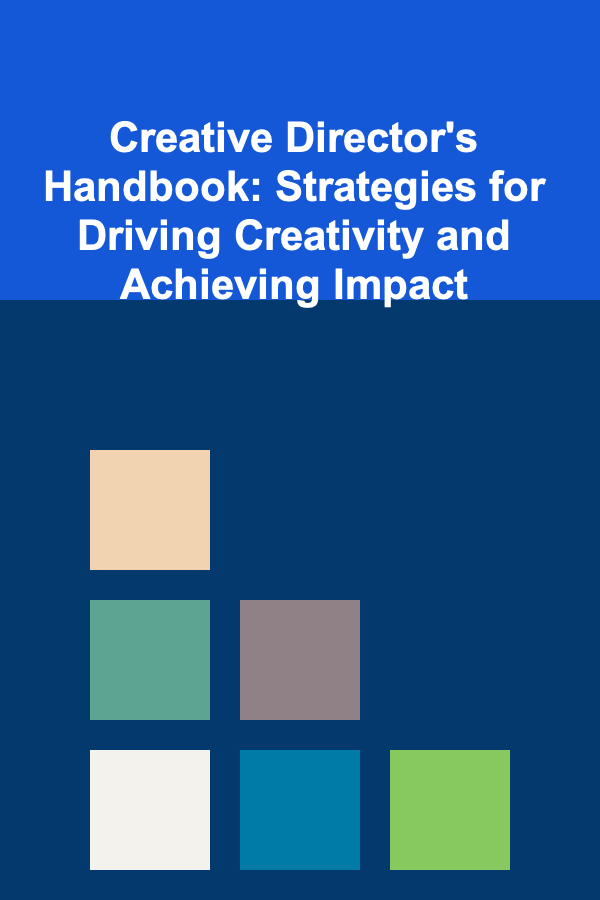
How To Craft Irresistible Marketing Messages
ebook include PDF & Audio bundle (Micro Guide)
$12.99$8.99
Limited Time Offer! Order within the next:

In the realm of marketing, crafting a message that resonates with your audience is one of the most crucial aspects of building a strong brand and driving sales. Whether you're marketing a product, service, or an idea, your message is the bridge between your brand and your target audience. It has the potential to stir emotions, solve problems, and create connections that lead to conversions. But crafting such messages is not an easy task; it requires understanding human psychology, having a deep knowledge of your audience, and constantly adapting to the market landscape. This article delves deep into the nuances of creating marketing messages that captivate, convince, and convert.
Understanding the Power of a Great Marketing Message
Before diving into how to craft an irresistible marketing message, it's essential to first understand why a good message is so powerful. A great marketing message can help your brand stand out in an overcrowded market. It conveys not just what your product is, but why it matters to your customers and how it aligns with their needs or desires.
In today's highly competitive environment, where consumers are bombarded with thousands of marketing messages every day, standing out requires more than just catchy slogans. It requires a well-thought-out approach that speaks directly to the audience's emotions, pain points, and aspirations.
The Role of Emotion in Marketing
Emotions play a central role in decision-making, and this is where many marketers go wrong. Often, marketing messages focus solely on the features of a product, without addressing the deeper emotional needs of the customer. While features are important, it's the emotional resonance that often drives a purchase.
Think of Apple, a brand that has mastered the art of crafting marketing messages that go beyond the product. Their messages evoke a sense of innovation, simplicity, and even status. When people buy Apple products, it's not just for the specs---they're buying into a lifestyle, an emotional connection.
The Importance of Simplicity
A common mistake in marketing is overcomplicating the message. In an age of short attention spans, consumers often don't have the time or patience to digest a complicated message. The most successful messages are often simple and to the point.
Take Nike's "Just Do It." It's a short, direct message that speaks to the core of what the brand represents: motivation, action, and perseverance. This simplicity makes it easy to understand and remember, creating a lasting impact in the minds of consumers.
Key Elements of an Irresistible Marketing Message
Now that we understand the power of a great message, let's break down the key elements that make marketing messages irresistible. Each component contributes to the overall success of the message in different ways, but together, they create a compelling narrative that resonates with the target audience.
1. Know Your Audience
Before crafting any marketing message, you must have a clear understanding of your audience. Who are they? What are their pain points? What motivates them? What do they fear? These are the fundamental questions you need to answer.
Effective messaging requires more than just identifying the demographic characteristics of your audience (age, gender, location). It's about digging deeper into their behaviors, preferences, and emotions. This is where audience segmentation comes into play. By dividing your audience into smaller, more specific segments, you can tailor your messages to each group's unique needs and desires.
2. Define the Problem
People don't buy products or services for the sake of owning them---they buy solutions to their problems. Whether it's alleviating pain, fulfilling a need, or fulfilling a desire, your marketing message must clearly define the problem your product solves. If you can't articulate this clearly, the customer may not see the value in your offering.
For instance, consider a skincare brand. Instead of focusing on the technical aspects of the product, such as the ingredients, the message should highlight the problem it solves: the customer's struggle with acne, dull skin, or dryness. Once the customer recognizes that your product addresses their pain point, they're more likely to pay attention.
3. Present the Solution
Once the problem is defined, the next step is presenting your product as the solution. Here, you need to emphasize the benefits of your product and how it can directly resolve the pain point your audience is facing. Focus on the transformation your customer will experience after using your product.
But, it's not enough to just state that your product solves the problem; you need to explain how it does so in a way that's relatable and easy to understand. Clear and concise language is essential. Don't overwhelm your audience with technical jargon---keep it simple and straightforward.
4. Establish Trust
Trust is a critical element in any successful marketing message. Consumers are more likely to buy from brands they trust, and building that trust begins with your messaging. This can be achieved in several ways:
- Social Proof: Use testimonials, reviews, case studies, or user-generated content to show that others have had positive experiences with your product or service.
- Expert Authority: If your product is backed by certifications, endorsements, or expert recommendations, highlight these in your messaging.
- Transparency: Be honest and transparent about what your product does and doesn't do. Don't overpromise, as this can lead to disappointment and damage your credibility.
5. Use Persuasive Language
The language you use in your marketing message is crucial in persuading your audience to take action. To make your message irresistible, you must use words that evoke action and emotion. Strong, persuasive language appeals to both the rational and emotional sides of your audience.
- Use Power Words: Words like "exclusive," "limited-time," "guaranteed," and "free" create a sense of urgency and excitement.
- Call to Action: A clear call to action (CTA) is essential in every marketing message. Whether it's "Buy Now," "Learn More," or "Sign Up Today," the CTA directs the audience on what to do next and helps drive conversions.
- Create Urgency: Phrases like "while supplies last" or "only a few spots left" create a sense of urgency and motivate customers to act quickly.
6. Highlight the Benefits, Not the Features
Many marketers make the mistake of focusing on the features of their product instead of the benefits. Features are important, but customers want to know how the product will improve their lives. Your marketing message should focus on how your product will make the customer's life easier, better, or more enjoyable.
For example, instead of saying "Our shoes are made from high-quality leather," you could say, "Our shoes provide comfort and durability, so you can walk miles without discomfort." The latter message highlights the benefit of comfort, which resonates more with the customer.
7. Tell a Story
Humans are wired for storytelling. We are more likely to remember stories than dry facts or statistics. Therefore, incorporating storytelling into your marketing message can make it much more engaging and memorable.
A good story in marketing typically includes a relatable protagonist (your target customer), a challenge or conflict (the pain point), and a resolution (your product or service). It should evoke emotions and take the customer on a journey that they want to be part of.
For example, consider the famous "Share a Coke" campaign by Coca-Cola. Instead of just selling a product, they told a story about sharing moments of happiness with loved ones, symbolized by personalized Coke bottles. This not only made the product more relatable but also created an emotional connection with the brand.
8. Test and Refine Your Message
Even the best marketing messages can be improved through testing. That's why it's essential to constantly test and refine your marketing message to see what resonates most with your audience. A/B testing, surveys, and feedback from customers are valuable tools for measuring the effectiveness of your messaging.
You may find that certain elements of your message---such as the tone, wording, or imagery---need to be adjusted to increase engagement and conversions. Don't be afraid to tweak and optimize your message over time to ensure it stays relevant and effective.
Final Thoughts
Crafting irresistible marketing messages is both an art and a science. It requires a deep understanding of your audience, a clear articulation of their problems and desires, and the ability to create a compelling narrative that drives action. By focusing on emotion, simplicity, and persuasion, you can create messages that not only capture attention but also build lasting relationships with your audience.
Ultimately, the key to successful marketing messaging lies in creating a conversation with your audience---one that speaks directly to their needs, aspirations, and values. With a well-crafted marketing message, you can not only attract customers but also inspire loyalty and trust that lasts well beyond the initial sale.

Creative Director's Handbook: Strategies for Driving Creativity and Achieving Impact
Read More
How to Discover the Future of Personalized Medicine
Read More
How to Prevent Noise Transfer Through Air Vents and Ducts
Read More
How to Master Basic Sauce Making
Read More
How to Fuel Your Body for Optimal Performance
Read More
How To Design Infographics for Presentations
Read MoreOther Products

Creative Director's Handbook: Strategies for Driving Creativity and Achieving Impact
Read More
How to Discover the Future of Personalized Medicine
Read More
How to Prevent Noise Transfer Through Air Vents and Ducts
Read More
How to Master Basic Sauce Making
Read More
How to Fuel Your Body for Optimal Performance
Read More